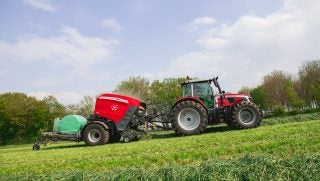It’s that time of year when mosquitoes are everywhere, feasting on blood and being an itchy nuisance and, sometimes, a danger.
And while you might turn your nose up at insect farming, a team of enterprising Agricultural Research Service scientists are working on turning the table on mosquitos and other pests by making them into animal feed.
The new project is one of three winning ideas in ARSX2021, a competition that incentivizes researchers to propose innovative, high-risk ideas to solve pressing challenges. The 2021 theme, “Harvest for a Healthier Future,” focused on “transformative ideas that will help achieve a resilient and healthy food system.”
When the team’s design is finalized, individual farmers could use the traps to feed their animals or larger commercial operations that could be net exporters of insect-based feed.
The team, composed of Drs. Alex Chaskopoulou, Lee Cohnstaedt, Kiki Zinoviadou, Annie Donoghue, Brenda Oppert, and Komala Arsi had never worked together. The competition united them through their complementary expertise, building camaraderie that benefitted the project.
The researchers have been testing and refining types of insect traps and examining the captured insects to ensure they won’t transmit pathogens up the food chain.
The insects seem likely to be a hit with animals and their human caretakers. In fact, as Chaskopoulou notes, chickens seem to prefer mosquitoes to their current feed vastly: “The moment that the chickens got the mosquitoes, you could see in the farmers’ faces, they were in awe, like: ‘oh my goodness, how is this possible?'”
As seen in the video, the chicks were rushing to the mosquito feed over a soybean-based, traditional feed. The mosquitos contain about 63 percent protein, while the soybean feed contains about 40 percent protein.
“There’s a lot of anecdotal evidence that if chickens have access to insects, their yolks are yellower, the eggs taste different.” Cohnstaedt stated, “I think lots of people who have backyard chickens will attest that if you give chickens higher-quality proteins, minerals, and omega-3 fatty acids, everything looks better, and it tastes better.”
And that’s not all. Zinoviadou, who specializes in food science, notes, “Insects, in general, have a very high content of chitin, a polysaccharide that can have anti-microbial activity … anecdotal evidence showed that when quails were fed with mosquitoes, the fatality rate of newly-hatched birds went down almost to zero.”
Of course, all these benefits will only accrue if farmers choose to adopt the insect-trapping and feeding practices the team is refining a decision that comes down to cost. The team is acutely aware of that fact and is working hard to make their solution practical and accessible. Their goal is to include only parts found at a hardware store or junkyard in their insect traps.
The researchers say the benefits could be manifold: less pesticides, higher protein, and an easier, lower-waste environment that reduces carbon dioxide and other environmental contaminants.
And the wins don’t stop there: if the project succeeds, it will also further validate the ARSX model, driving innovation forward far more quickly than traditional research that doesn’t feature the same kind of collaboration. For the team, that proof has already materialized. Says Donoghue: “I see ARSX, our project, as a jumping block for the next 5 years of research. We’re talking about a lot more expansion and new grants that are coming out of it and ideas for us to look at these things a lot more,” noted Kathryn Markham, ARS Office of Communications.
»Related: Environmental report details strategies for agricultural emissions


